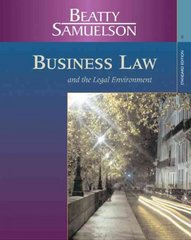Question
Which one is true? Group of answer choices The incidence of taxation falls fully on the sellers if supply is perfectly inelastic and demand is
- Which one is true?
Group of answer choices
The incidence of taxation falls fully on the sellers if supply is perfectly inelastic and demand is downward sloping.
The equilibrium price will decrease if a specific tax is imposed on buyers, supply is perfectly elasticand demand is downward sloping.
In general the burden of the tax falls on the more elastic side of the market
The incidence of taxation falls fully on the buyers if supply is perfectly elastic and/or if demand is perfectly inelastic.
All of the above.
2.The Commonwealth government decides to provide a subsidy of 30 for the buyers of bikes. Assume that the market demand for bikes is given by: p = 300 - 2Q. Assume that the supply curve for bikes is given by p = 30 + Q. Which of the following statements is true?
Group of answer choices
- The incidence of the subsidy is $20 to buyers and $10 to sellers.
- Following the imposition of the subsidy the total price paid to sellers including the subsidy increases by 10 and the equilibrium quantity also increases by 10.
- Following the imposition of the subsidy the total price paid to sellers including the subsidy increases by 20 and the deadweight loss that results from the subsidy is equal to 150.
- a and b
- a and c
3.
Which of the following is true?
Group of answer choices
- Imposing a tax to a perfectly competitive market which operates at the equilibrium will not have any deadweight loss.
- A tax that does not raise any revenue has a zero deadweight loss.
- The deadweight loss from a per-unit tax in a market is positively related to the absolute value of the elasticity of demand and to the absolute value of the elasticity of supply.
a and c
b and c
4.
Covid-X is on the rise: the number of recorded sufferers has increased noticeably in the past few months. Covid-X is a serious and highly contagious respiratory infection. Immunisation is the best way to prevent the disease and its spread. However, very few individuals get a vaccination. Suppose demand for vaccination against Covid-X is P = 200-Q and supply is P = 22+Q/4. Moreover, assume the external benefit to society of getting vaccination is 21.
If the government wants to provide a subsidy per vaccination and pays the subsidy to sellers. What is the optimal subsidy per vaccination? Group of answer choices
The optimal subsidy per vaccination is 20.
The optimal subsidy per vaccination is 25.
The optimal subsidy per vaccination is 23.
The optimal subsidy per vaccination is 21.
The government doesn't need to provide a subsidy. Citizens are willing to pay
whatever they should to get vaccination.
5.
Consider a public good that for consumer 1 has a marginal benefit of MB= 15 - q and for consumer 2 a marginal benefit of MB = 27 - 3q. If the marginal cost of provision is $5 per unit, what is the socially optimal level of output?
Group of answer choices
9 units
10 units
9.25 units
7 units
8 units
Step by Step Solution
There are 3 Steps involved in it
Step: 1

Get Instant Access to Expert-Tailored Solutions
See step-by-step solutions with expert insights and AI powered tools for academic success
Step: 2

Step: 3

Ace Your Homework with AI
Get the answers you need in no time with our AI-driven, step-by-step assistance
Get Started


